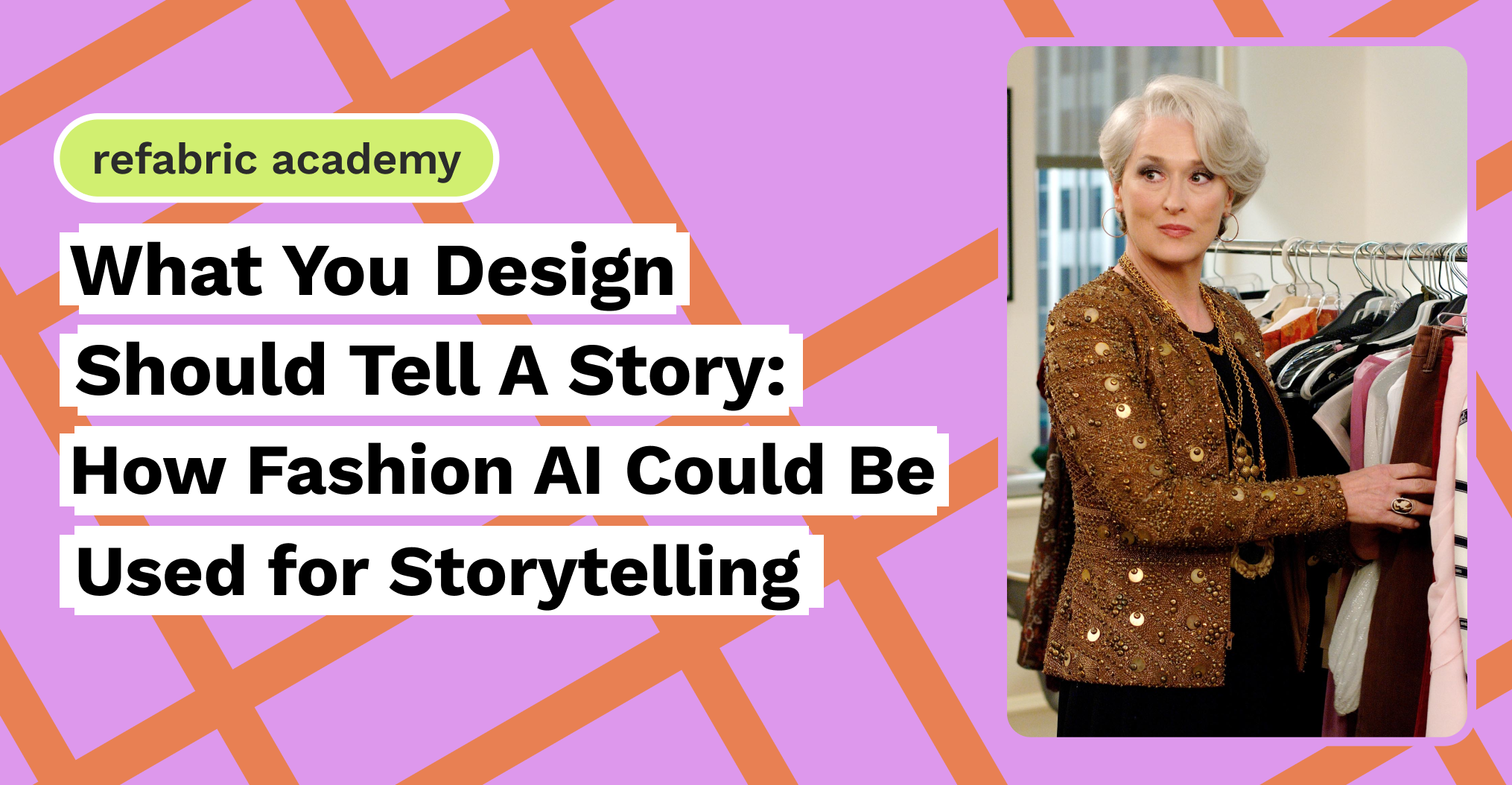In the world of fashion, every design should tell a story and fashion AI is now playing a revolutionizing role on how stories are told through clothing. This idea is perfectly captured in the iconic scene from “The Devil Wears Prada,” where Miranda Priestly, the formidable editor-in-chief, delivers her famous “Cerulean Top” monologue. In this scene, she eloquently explains how even the simplest choices in fashion are deeply rooted in a complex narrative of design, taste, and cultural influence. Fashion, as Miranda suggests, is not just about clothing; it’s about storytelling.
With the rise of fashion AI features, this storytelling aspect is becoming more prominent and accessible to a broader range of designers. Fashion AI could help designers to tell stories more efficiently, by editing lines with unique prompts and vast amounts of data analysis.
Miranda Priestly’s Lesson in Fashion Storytelling
We all disliked the Miranda Priestly character for a bit. “Oh don’t be ridiculous Andrea, everybody wants this” quote echoes in our minds after the sound became a huge trend on TikTok. Devil Wears Prada, an iconic 00s movie inspired by the same-titled book, has become a huge popular culture trend that never went out of fashion. Many scenes that are engraved in our minds, with the complicated social structures of the high fashion world.
Miranda Priestly, the editor-in-chief character in the movie, is a rigid, intelligent and quite strategic character. Miranda is an enthralling, complex figure who never ceases to astound. Owing in part to Meryl Streep and part to superb scripting, the viewer is compelled to pay attention whenever Miranda speaks. She speaks with a particular gravitas to everything.
Miranda’s multifaceted complex character made her a very special character and helped us to understand her but at the same time, fully shocked by her lack of empathy with other people. But there was one scene that she was so right with her argument. The famous monologue “Cerulean Top”, is where the magazine team decides on which belt should go with the dress that’s being picked. Looking very similar in color and style, Andy laughs at the team’s indecisiveness on these two almost-same-colored belts.
Miranda doesn’t find this funny of course, she doesn’t only give a lesson to Andy but also the audience watching the movie. While the whole movie is a satirical evaluation of the high-end fashion world, Miranda’s monologue changes things up a little bit. Whether we think that people are fashionable or not, individuals choose the garments that are curated for them by designers and tastemakers.
The Role of Fashion AI in Storytelling
Fashion AI design is revolutionizing how stories are told through clothing. By analyzing vast amounts of data, fashion AI can identify patterns and trends that might not be immediately apparent to human designers. This technology enables designers to create garments that not only align with current trends but also push the boundaries of creativity by incorporating unexpected elements from different cultural or historical contexts.
For instance, fashion AI design can help designers understand the evolution of a particular color or style, much like how Miranda explains the journey of the cerulean color in the fashion industry. By utilizing fashion AI, designers can trace the origins of a trend, understand its cultural significance, and create designs that resonate with the emotions and values of their target audience.
Moreover, fashion AI design can assist in creating personalized stories for consumers. With fashion AI, designers can tailor their creations to reflect the personal narratives of their clients, making fashion more than just a visual experience but a deeply personal one. Whether it’s through custom patterns, unique color combinations, or innovative materials, fashion AI enables designers to craft garments that tell the wearer’s story in a way that’s both meaningful and stylish.
The Future of Fashion Storytelling with Fashion AI
As fashion AI continues to evolve, its potential for storytelling will only grow. Designers will be able to leverage AI in fashion to explore new creative possibilities, blending traditional design principles with cutting-edge technology. This could lead to the creation of fashion collections that are not only aesthetically pleasing but also rich in narrative, offering consumers a deeper connection to the clothes they wear.
In addition, fashion AI can democratize the storytelling process. Traditionally, high-end fashion has been the domain of a select few, but AI technology has the potential to make advanced design techniques accessible to a wider audience. This means that more people can engage in the storytelling aspect of fashion, whether as designers, consumers, or influencers.
By that, every outfit tells a story or it should.
